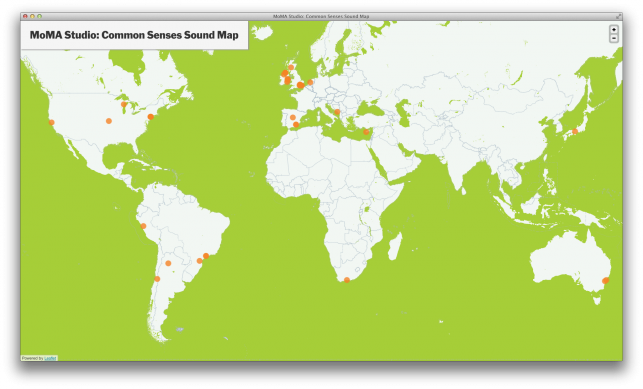One of the projects of the Common Senses exhibit at MoMA last year was an interactive sound map, which anyone can contribute to. According to the Inside/Out blog,
"Sound and space are closely linked. Our ears help define our surroundings by picking up on spatial clues in reflected sound waves. This innate ability to situate ourselves in our soundscape was probably more overtly useful in the days before electricity, when we had to rely on our ears to alert us to danger our eyes could not detect. There is, however, a movement in the visually impaired community to cultivate this ability to help them navigate in the world and participate in sports, and artists such as Janet Cardiff use sound and spatiality as integral parts of their work."
This map made me think of the maps that I have made with children over the years - or, more often, the maps that they have initiated. From roads made of blocks to more traditional maps that use the visual to show place, children's representation of something as abstract as space is always worth stepping back and observing.
In Context:
- Use an mp3 Recorder
to explore your home or community. Upload your sounds to the MoMA sound map, or create your own version of a sound map, translating the sounds into visual images.
- Go for a community walk, and pay attention to what is most salient to the children on that walk: are they noticing sounds? Smells? Textures? Start with the visual, and create a different map each time you go for a walk.
- Encourage parents to download a recording app like AudioBoo for their iPhone or Android and let their child choose sounds to record in their world, and create a way to share those with the classroom and school community.
- Create a mapping prompt in the classroom, allowing children to use maps in their art: drawing on maps, or making landmarks out of clay, for example.
- Add large maps to the areas where children do their dramatic play, either hanging them on wall or having folded maps available.
- Provide masking tape that children can use to create roadways on the floor.
- Explore your community on Google Earth.





Thanks. I love these new in context posts. Will try some of these ideas.
ReplyDelete